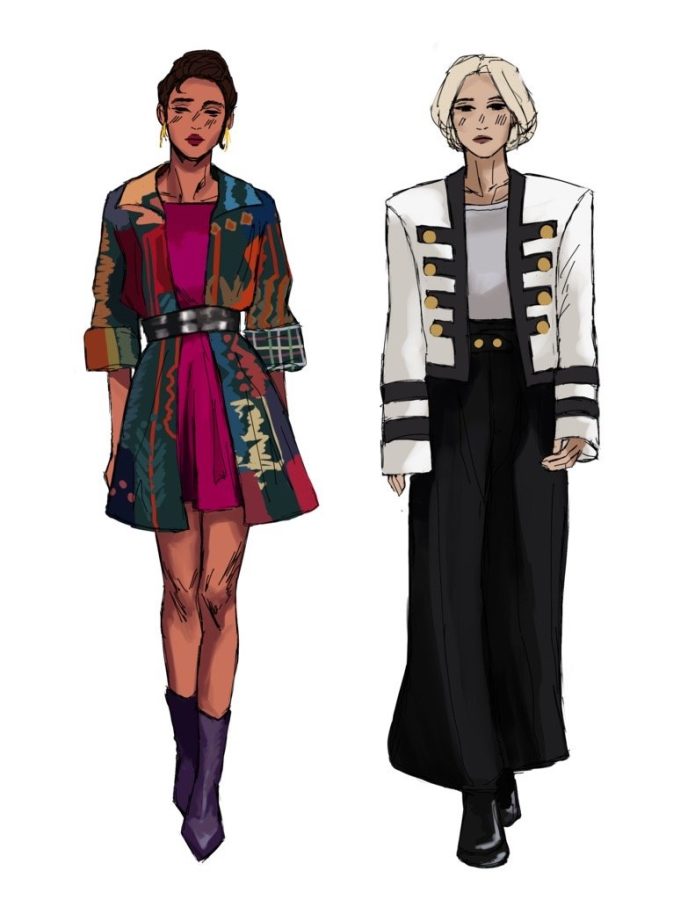Review: ‘Emily in Paris’ discourages American maximalist fashion
February 7, 2022
“Emily In Paris,” directed by Andrew Fleming, has become the most popular comedy on Netflix partially based on the controversial fashion statements the main character, Emily, makes as an American living in Paris. The series follows Emily as she works a year abroad for a French fashion brand, Savior, where she leads the audience through her friendships and drama.
The highly anticipated second season was released in December and was viewed for 107.6 million hours in the first week after its release date.
While Fleming’s overly exaggerated interpretation of a clueless American in Paris are interesting, its the peculiar choices of clothing that Emily (Lily Collins) wears that really draws me in.
Emily’s wardrobe is filled with clashing bold colors, sequins and funky silhouettes to complement her bubbly personality, and it works.
The “Emily in Paris” costume designer Patricia Field said her clothing is meant to portray America’s reputation of being overly optimistic in contrast with the reputation of the French to be classy. Emily’s color-filled wardrobe seems to reflect the short-lived fashion trends that Americans embrace, while her French friends represent timeless, slow-fashion designs.
The show mirrors the real-world shift towards French inspired minimalism, which was reflected in the fall 2022 fashion shows. Major designers such as Prada, Fendi and Saint Laurant showcased their designs with an overarching theme of timeless simplicity, with monochromatic suits and a strong emphasis on tailoring rather than color schemes.
For example, in the second season premier, Emily wears a sequin covered mini dress with strappy heels, which makes her look like a walking disco ball. Later in the episode, Emily wears a silver metallic Miu Miu coat and a bright pink Prada purse over her dress, which is also, shockingly, covered in embellishments.
Although Emily’s metallic outfit is slightly nauseating, her fashion sense encapsulates American maximalism: the driving force of short-lived fashion cycles.
Emily’s outfit contrasts with her French friend, Camille, who wears a nameless simple black mini dress. With the two friends standing side by side, Field emphasizes the American obsession for name brands, which further precipitates the unnecessary consumption of fashion.
Emily’s fashion does not end on a negative note though, as she boards a train to Saint Tropez in a 1960s inspired outfit.
The ‘60s were an incredible age for fashion in America –– designers such as Mary Quant debuted the mini skirt, and super models such as Dame Lesley Lawson (Twiggy) publicized daring looks through unisex clothing, mini dresses and textiles inspired by optical illusions.
Emily’s beige and yellow trench coat paired with a turquoise mini dress seems to perfectly symbolize this fashion era, where the innovative interpretations of European fashion from American designers’ established the U.S. as a force in the fashion industry.
As practicality and athleisure have become popular sources of inspiration for American fashion, it no longer runs as a close competitor to European fashion. However, “Emily in Paris” encourages American fashion houses to revitalize their once creative mindset, to create popular clothing that embodies both timelessness and uniqueness.








prachi • Aug 4, 2022 at 5:25 am
This was an interesting read, and so well written. Thanks for the review post, I enjoyed reading it.